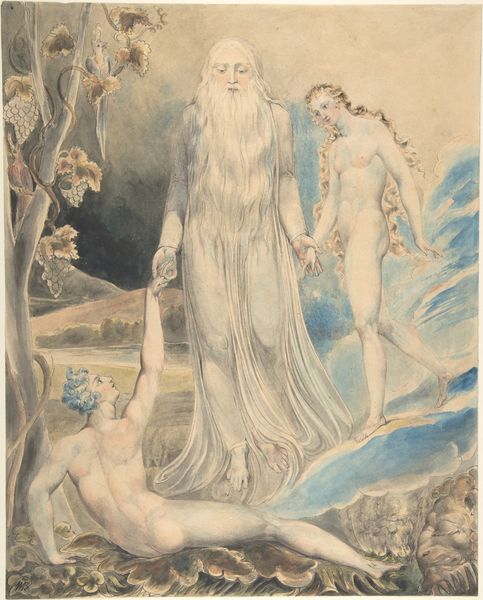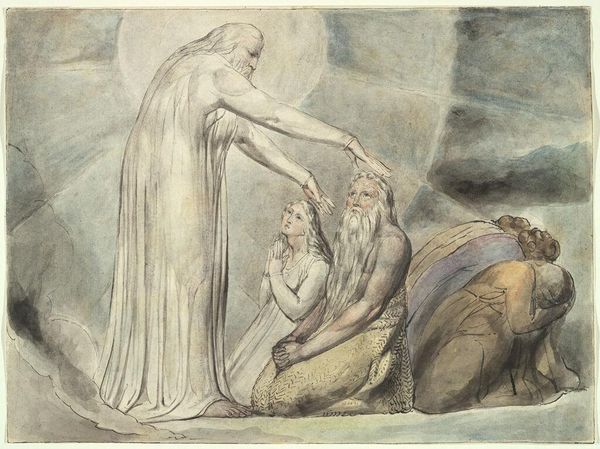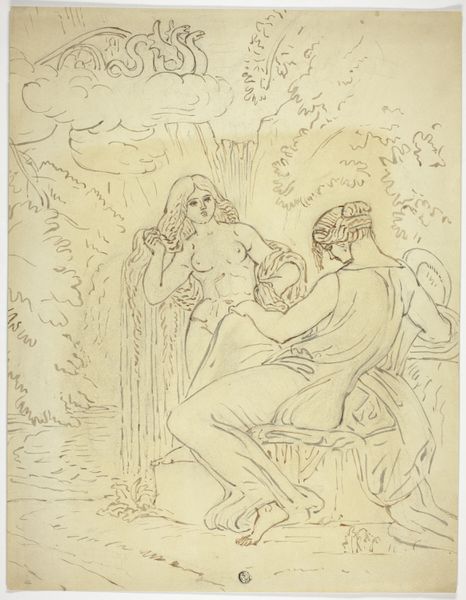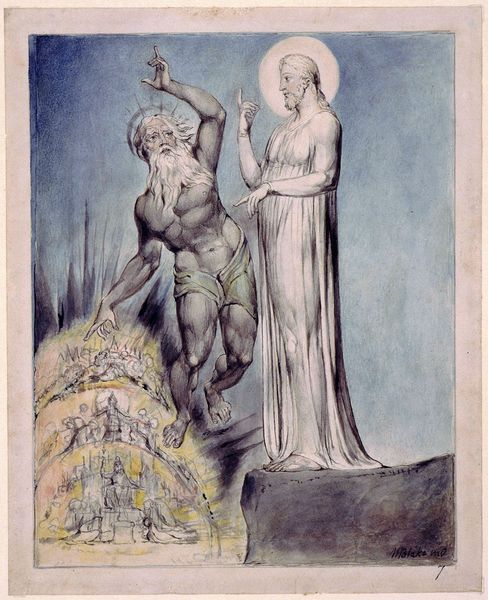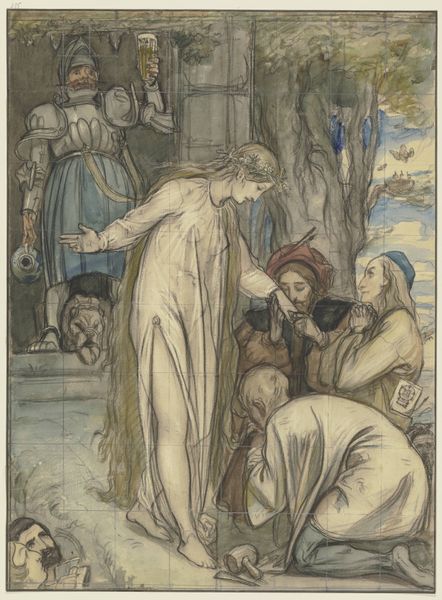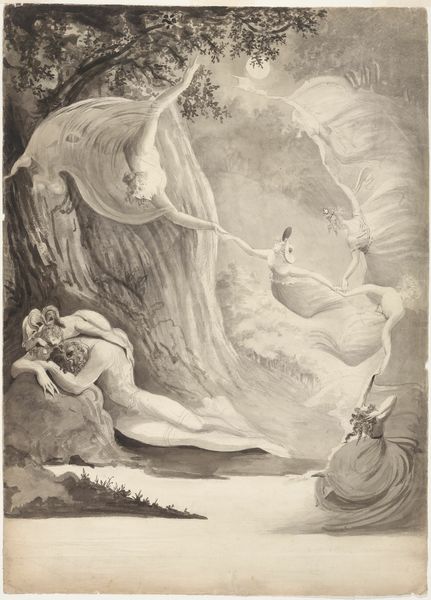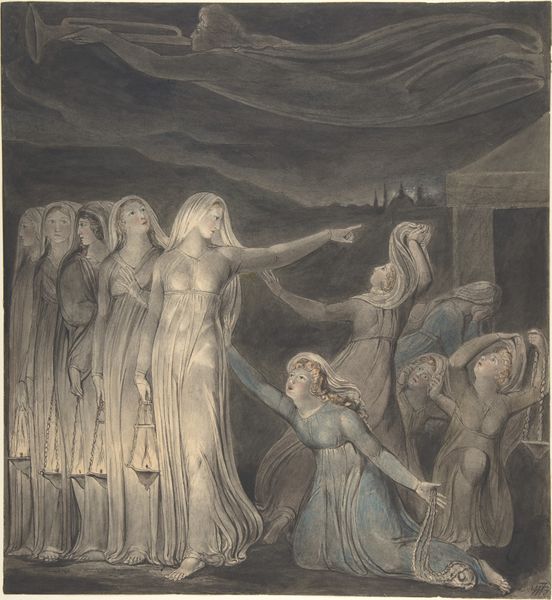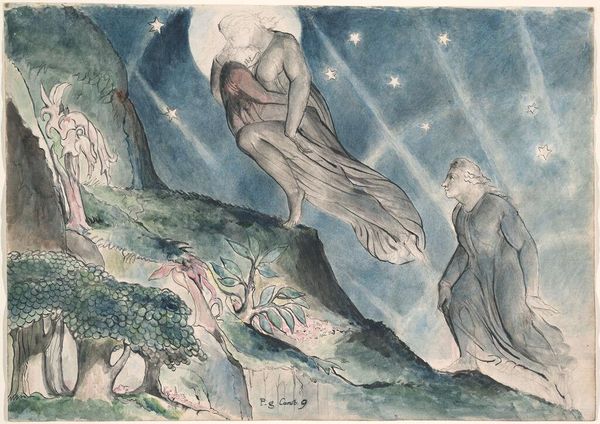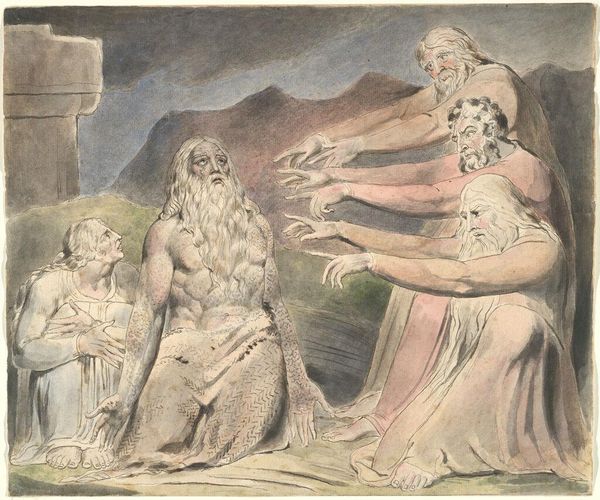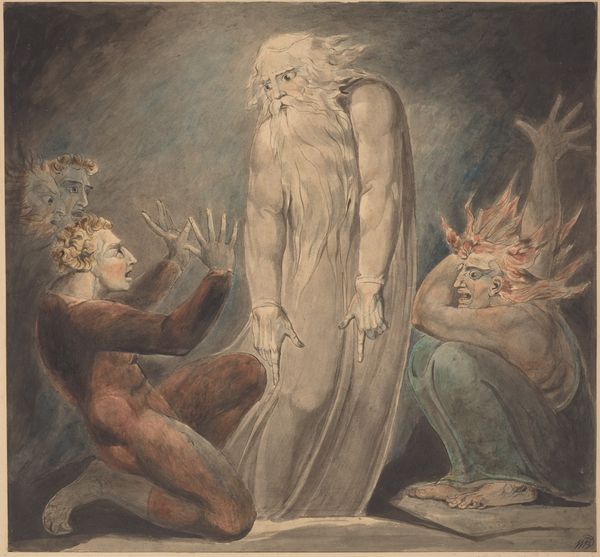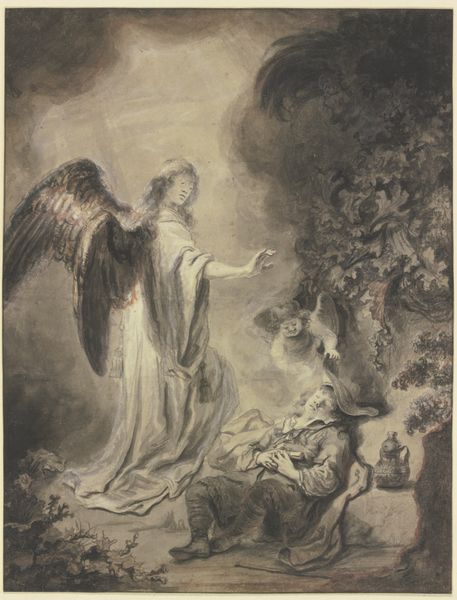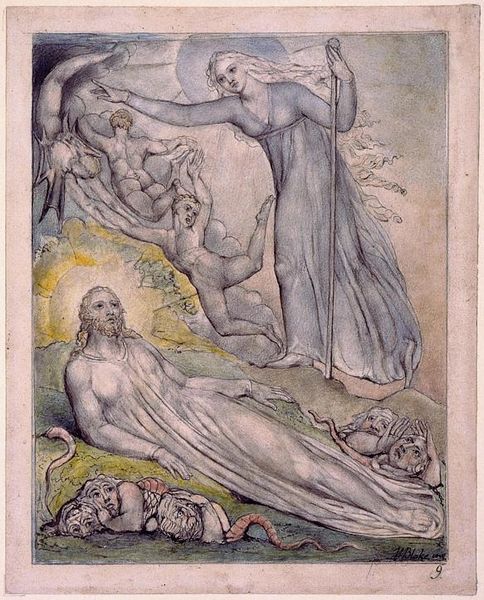
The Rest on the Flight into Egypt (The Repose of the Holy Family in Egypt) 1806
0:00
0:00
drawing, coloured-pencil, print, watercolor, charcoal
#
tree
#
drawing
#
coloured-pencil
#
narrative-art
#
animal
# print
#
landscape
#
charcoal drawing
#
figuration
#
watercolor
#
coloured pencil
#
romanticism
#
watercolour illustration
#
charcoal
#
watercolor
Dimensions: Sheet: 13 13/16 × 14 9/16 in. (35.1 × 37 cm)
Copyright: Public Domain
Curator: Here we have William Blake's "The Rest on the Flight into Egypt," created in 1806. It's a delicate piece rendered in watercolor, charcoal, and coloured pencils. What are your immediate thoughts? Editor: It feels… ethereal. The muted palette lends an almost dreamlike quality. The figures appear to float rather than exist firmly within the landscape. Curator: Precisely. Blake uses line and wash techniques that were central to his artistic approach. Consider how he delineates forms with very thin strokes. Observe how the figures subtly interact, almost dissolving into the setting. The composition itself is quite unique with the strong verticals and use of layering and contrasting dark to light values. Editor: Indeed, the elongated forms of Mary and Joseph create vertical anchors, but I’m also struck by the socio-political context. The Flight into Egypt is often depicted as a moment of disruption. It reminds the viewer that in times of turmoil people seek safety elsewhere, challenging borders and social order. Here the historical context adds another layer to how we interpret its iconography, the dangers and displacement shaping that era. Curator: Very interesting. Blake’s distinctive method reflects his engagement with Romanticism. There is a sense of inner vision and intensity in his presentation, that departs from standard conventions. Take notice of how that transcendental, romantic aesthetic shows in other parts of the piece. Editor: I agree, that is highlighted throughout this print in all areas and especially so in the soft lighting—the setting sun, that perhaps is hinting at both physical and spiritual renewal of both these refugees. The use of color further intensifies this reading, a stark change against its original depictions. Curator: His unique blend of figuration and symbolic landscape is noteworthy. Editor: Definitely something that he masters throughout his body of work, as a means to show new interpretations of religion and politics that surrounded that time in history. Curator: It provides insight into his distinct visual language and his complex understanding of faith and spirituality. Editor: This exploration enriches our appreciation, I think. By seeing how deeply interconnected these dimensions are, it adds to how art interacts with society on an individual basis, but it serves also as a broader mirror of human experience.
Comments
No comments
Be the first to comment and join the conversation on the ultimate creative platform.
